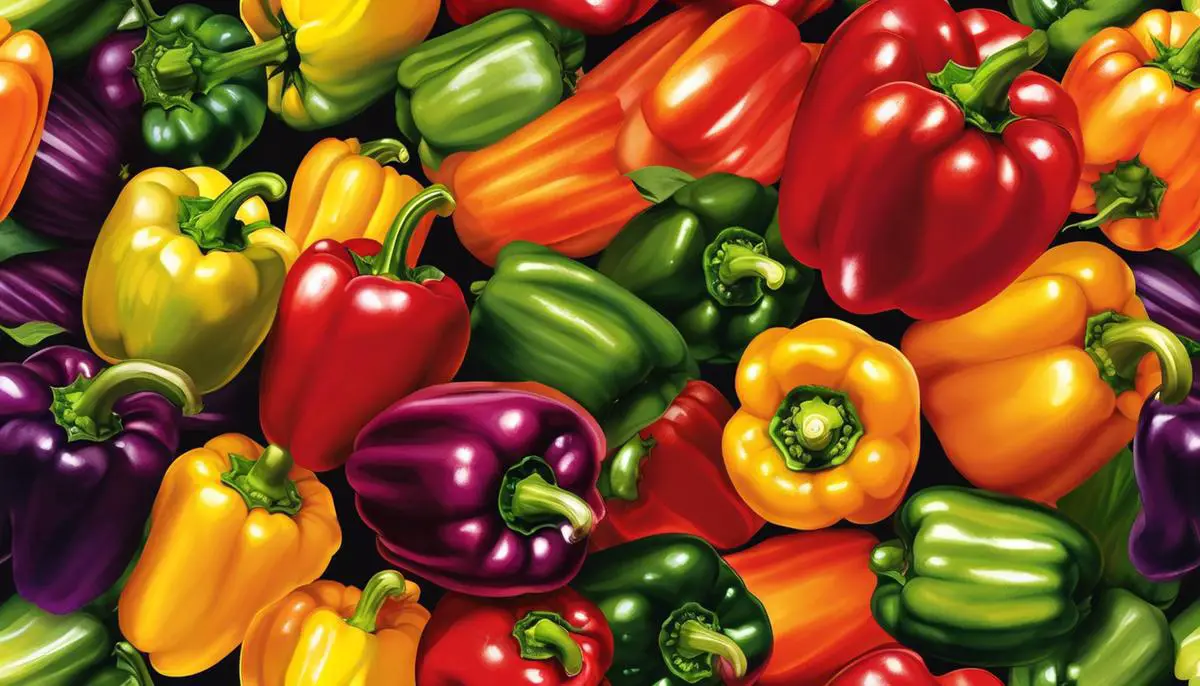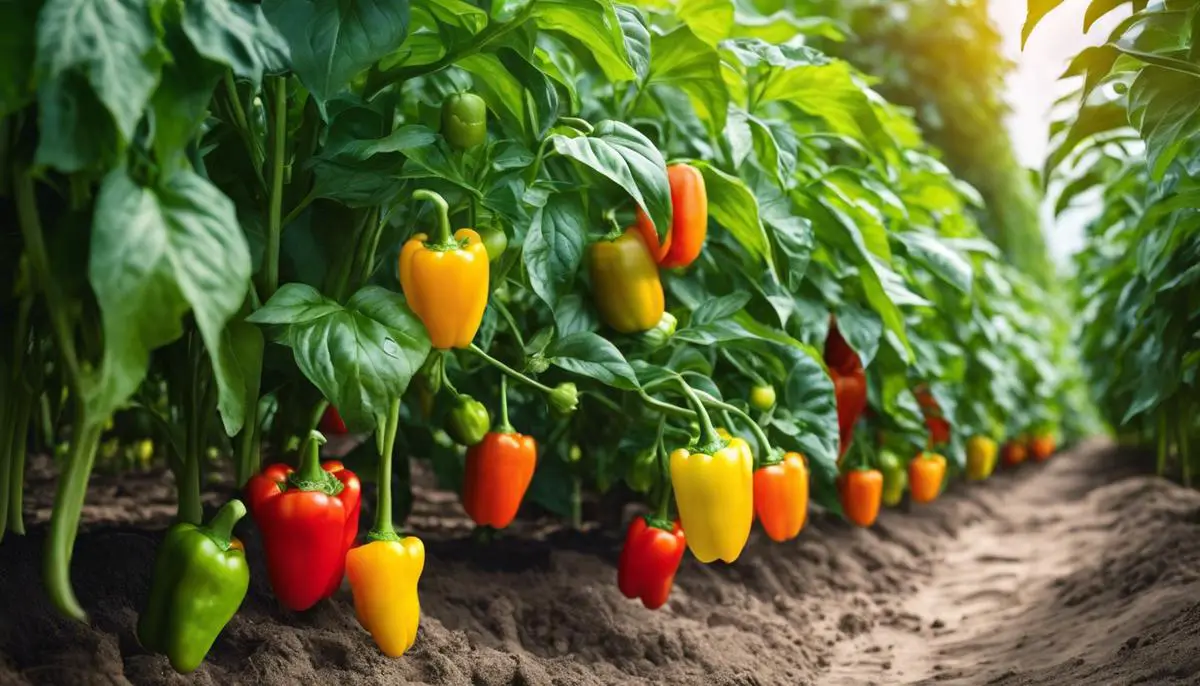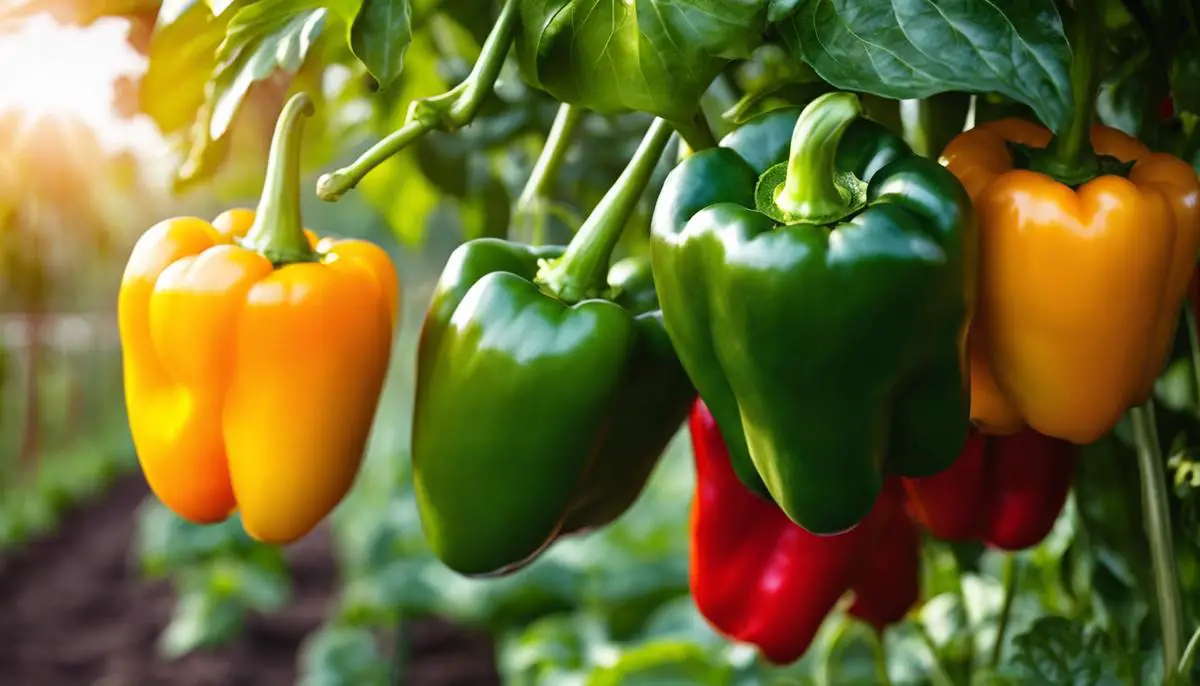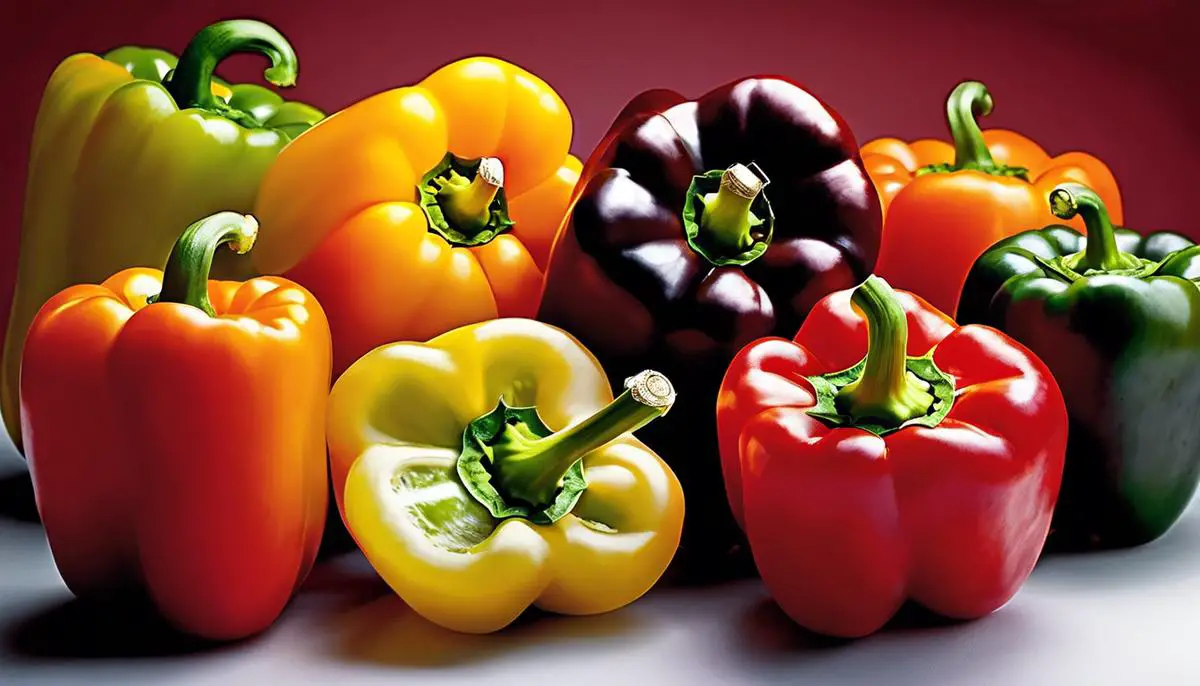As we become increasingly conscious of the impact of our actions on the environment and our health, many are turning towards organic farming as a sustainable, earth-friendly alternative. Greatly enriching this shift is the cultivation of bell peppers organically—a flavorful, nutritious crop—which offers more than meets the eye. Within this informative guide, we aim to delve deeply into the principles of organic farming, its comparison with conventional methods and how it can contribute to healthier and more robust bell pepper crops. Furthermore, we explore how to choose the most suitable bell pepper cultivar and planting season, essential soil preparation tips, methods of care and maintenance, and finally, the harvesting and storage of this vibrant vegetable. Buckle up for a fascinating journey through organic bell pepper cultivation!
Understanding Organic Farming
As hobbyists delve into the world of green thumbs and garden tillers, one excellent venture to embark upon is organic farming. A gem that stands out among the various crops, inviting both beginners and seasoned gardeners, is the humble bell pepper. But why are nature enthusiasts so enticed by it? And how does organic farming make bell pepper cultivation ideal? It may surprise you that the answers can be found at the intersection of sustainability, health benefits, soil fertility, and flavor enhancement.
Reader Poll: What online courses would interest you?
Organic farming and bell peppers go hand-in-hand like bread and butter. For starters, the natural farming method contributes to sustainable agriculture. Veering away from synthetic fertilizers and pesticides, organic farming upholds the virtue of eco-friendliness, promoting biodiversity and sustaining environmental health. As bell peppers thrive in this approach, they play their part in this beautiful cycle of nature, reflecting in their vibrant colors and robust shapes.
Health is another colossal advantage. Bell peppers grown organically tend to pack in more nutrients than conventionally grown ones. Organic bell peppers are rich in vitamins A, C, and E, alongside a fantastic mixture of antioxidants such as lutein, zeaxanthin, and quercetin. The natural approach also means there’s no residue of harmful chemicals, a common concern in non-organic produce. And who knew that vibrant reds, yellows, oranges, and greens of these crunchy delights could pack such a health punch?
Thirdly, organic farming bolsters soil fertility, enhancing not only the present crop yield but also future ones. By adding organic matter like compost and manure, the soil structure improves, making it more supportive and nourishing for bell pepper plants. Enriching soil in this manner promotes beneficial microbial activity, leading to improved plant growth and yields – a testament to the genuine value behind the patience and care of organic farming.
Subscribe to our newsletter!
Lastly, the ‘taste’ factor cannot be ignored. Multiple studies suggest that organic bell peppers boast a superior taste due to the high-quality soil they’re grown in and the organic fertilizers used. Sweeter, crunchier, and more flavorful, they are the sought-after stars in many kitchens, from salads, stir-fries, to stuffed delicacies.
Undoubtedly, organic farming is a well-suited method for bell pepper cultivation, and a worthy venture for any hobbyist. It merges sustainability, health benefits, soil fertility, and flavor enhancement into one delightful gardening practice. It is, undoubtedly, a green thumb’s dream come true. So, whether you’re starting a small kitchen garden or managing a full-scale farm, consider diving headfirst into the exciting world of organic bell pepper cultivation. It promises not only a bountiful harvest but a journey that enriches both the gardener and the environment. Happy farming!

Choosing the Right Cultivar and Season for Planting
Article: Deciding on the Perfect Bell Pepper Cultivar and Planting Season
Deciding on the right bell pepper cultivar and planting season could give any hobby farmer a bit of a headache. So many options, so many decisions. No worries, let’s simplify the process and offer a heady, helpful guide to getting those vibrant, crunchy peppers sitting pretty in your garden.
First things first: cultivars. The beauty of bell peppers lies not only in their allure but also in their diversity. Each cultivar brings to the table a unique blend of color, flavor, and growth characteristics. For instance, California Wonder is an ever-popular variety known for big, blocky fruits and good disease resistance. Sweet Banana, though not a “bell” pepper in the typical sense, is worthy of consideration for its slight bend, sweet flavor and lower heat levels. King of the North, on the other hand, is a rapid grower and ideal for those in colder climates. Choose a cultivar that resonates with your personal tastes and garden conditions.
Now, let’s turn to the planting season. Unlike their spicy siblings like jalapenos or serranos, bell peppers are total sun junkies. In other words, they adore warmth. Most bells require a long growing season – typically 60 to 90 days of warm, sunny weather post the last frost date. Hence, timing is key!
For avid gardeners in hotter regions, planting should ideally take place in late winter or early spring. Cooler climes, you ask? Look at late spring, when the threat of a surprise frost is nil.
While nurturing these pepper plants, ensure plenty of sunlight, between 6-8 hours a day. Soil that’s fertile, well-draining, and rich in organic matter is ideal for bell pepper growth.
Remember, disease resistance is a prized trait in pepper cultivars. Look for varieties that show resilience to common diseases like bacterial leaf spot or tomato spotted wilt virus. If, in any case, your plants seem a little under the weather, try crop rotation or pepper companion planting with the likes of basil or onions. A strong preventative strategy will ensure healthy, tasty fruits.
And there you have it! A simple, straightforward guide to deciding on the perfect bell pepper cultivar and planting season. Now it’s time to put on that gardening glove and till some soil. Your dream crop of organic bell peppers won’t plant itself. Happy gardening!

Soil Preparation and Planting
To dive into the intricacies of bell pepper cultivation, it’s crucial to understand the key steps in preparing the soil and planting the seeds. Starting from the ground up, so to speak, is the bedrock of a successful and fruitful garden.
Preparation for planting begins even before a single seed reaches the soil. For bell peppers especially, a rich, well-draining soil is of paramount importance. They thrive best in loam or sandy loam soils with a pH ranging from 6.0 to 6.8. Thus, testing your soil’s pH is a smart preparatory move, and it can be done with simple home testing kits available at most gardening centers. If your soil’s pH isn’t ideal, don’t fret! Amendments like limestone can raise pH, while sulfur products can lower excessively high pH.
Another step in preparing the soil is to enrich it with organic matter. Adding compost, leaf mold, or well-rotted manure to the soil can significantly enhance its fertility, further boosting your bell peppers’ health and resulting in a bountiful harvest.
Notably, timing is key when sowing bell pepper seeds. For most gardeners, indoor seed starting should begin 6-8 weeks before the last expected spring frost. Bell peppers seeds can be a bit finicky, requiring warm temperatures – ideally 70-80°F – to germinate.
After starting your seeds indoors, it’s crucial to thoroughly harden them off before transplanting. This process involves gradually introducing your young seedlings to outdoor conditions over a week or so, in order to avoid shocking them.
Once frost danger has passed, you’re ready to transplant your seedlings outside. Bell peppers love warmth, so make sure to choose a spot that receives 6-8 hours of sunlight daily.
Ensure to plant each seedling about 18-24 inches apart. This spacing gives each plant enough room to grow and get plenty of sunlight, while also helping to avoid potential diseases due to excess moisture.
Finally, regular watering is key for healthy bell peppers. While they don’t love drenched soils, they do need consistent moisture, especially during summer’s heat. On the other hand, overwatering can be as detrimental as drought, causing leaf yellowing or fruit drop, so make sure your soil drains well.
While gardening and bell pepper cultivation may seem daunting initially, with a bit of preparation, patience, and a whole lot of love, you can expect a rewarding yield. Happy gardening!

Care and Maintenance of Bell Pepper Plants
Now, moving forward in our journey into the world of bell pepper cultivation. Having picked a suitable bell pepper cultivar and prepared your soil, you’re ready to embark on the planting process.
One of the significant factors in successful bell pepper rearing is employing proper cultivation techniques. Hence, ample care should be taken while planting the seeds. Ideally, each seed should be planted an inch deep for optimal growth. Planting too deep could make it harder for the sprout to reach sunlight, delaying germination; while too shallow might make it prone to external weather conditions.
After planting your bell pepper seeds, consider covering them with a thin layer of compost or mulch. This creates a conducive environment for germination and helps retain soil moisture vital for sprouting. Soil temperatures around 75°F are perfect for seed germination, so maintaining an ideal temperature is essential, especially in the early development stages.
Next comes an equally crucial part – fertilization. Bell pepper plants are heavy feeders, and thus require consistent nutrients to thrive. A balanced organic fertilizer can provide the necessary nutrients for your bell pepper plants. Sprinkle some around the plant, keeping it a few inches from the stem to prevent burning the plant. Reapply every two weeks during the growing season to replenish nutrients consumed by the plant.
When your bell peppers start developing, staking or caging them can aid in their healthy growth. This gives the plants needed support as they grow and prevents the stems from breaking under the weight of the fruit. Moreover, specific types of bell pepper varieties grow best when their foliage is pruned. This makes the plant bushier and promotes more fruit production.
Don’t forget the importance of pest control in maintaining bell pepper plants. Common pests like aphids, cutworms, and whiteflies can be controlled using organic methods. Introduce beneficial insects like ladybugs or use insecticidal soap sprays as a measure to control these pests. You can also employ companion planting strategies to help ward off common pests and diseases.
Lastly, the process of harvesting your homegrown bell peppers is an art in itself. Patience is key, as bell peppers take time to mature – anywhere from 60 to 150 days from planting. Harvest them based on your preference – green peppers have a slightly bitter taste while red, orange, or yellow peppers are sweeter and have higher nutritional content due to longer maturing time.
In conclusion, cultivating bell peppers at home is a rewarding experience that requires careful attention to details. Armed with the right techniques and strategies, anyone can maximize their bell pepper yields and enjoy homegrown, organic bell peppers’ unparalleled taste and nutritional value. Happy gardening!

Harvesting and Storage of Bell Peppers
Harvesting and Storing Bell Peppers: A Gentle Approach
A heartening blaze of colors! Bell peppers not only splurge as a vibrant addition to your kitchen garden but also bring an impressive wealth of nutrients to your table. As we delve into the heart of harvesting and storing these delightful gems, it’s essential to remember that patience is key – the bell pepper decides the moment of its grand parade!
Harvesting
Harvesting bell peppers is indeed an art. With careful attention, it’s easy to decode the mystery of when to pick. While it varies with the bell pepper type, a general rule is to wait until the fruit is shiny and firm to the touch. The color changes from green to vibrant red, yellow, or orange, indicating ripeness. A ripe bell pepper tugs off the plant easily, showing signs of its readiness to grace your palate.
An important tip? Use a sharp pair of garden shears to cut off the fruit, protecting the parent plant’s health. A swift snip at the stem, leaving about a quarter inch attached, is all it takes. The plant, uninjured and vigorous, will continue to produce more tempting bell peppers.
Storing
Home-grown bell peppers make a refreshing change from store-bought options. How then can you treasure this goodness for longer? The answer lies in effective storage methods.
For optimum freshness, store unwashed bell peppers in the refrigerator’s vegetable drawer right after harvest. Bear in mind that exposure to moisture can attract mold. It’s best to leave bell peppers whole, as cutting or slicing reduces their freshness. If correctly stored, they can last up to two weeks.
For a longer shelf life, consider freezing the peppers. Chop them into slices or dices, spreading them on a cookie sheet, and freeze separately before transferring to a resealable bag. This prevents them from lumping together and enables easy use in future recipes.
Alternatively, bell peppers can be preserved by pickling or canning. This method extends their shelf life and adds a tangy taste that can elevate your meals.
Creating a World of Bell Peppers
From harvest to storage, every stage of dealing with bell peppers is a wholesome experience. Merging the joy of growth with the satisfaction of preserving, we embrace a lifestyle rooted in simplicity yet profuse with goodness.
Embrace the art of growing, harvesting, and storing bell peppers. Every crunch of its crisper texture and every taste of its richer flavor bears testament to your patient nurturing. And that, dear hobbyist, is as organic as it gets!

While bell peppers are a simple garden vegetable, their cultivation through organic farming methods holds significant benefits for our health, environment, and palates. We’ve unveiled the intricacies of organic farming, demonstrated the importance of careful cultivar selection and timing, and detailed how soil preparation can affect bell pepper growth. Moreover, we’ve armed you with practical advice on the ongoing care, maintenance, and pest control of these plants to ensure their hearty growth. Lastly, we’ve unveiled the techniques to discern perfect harvesting moments and proper storage methods. Mastery of these aspects will undoubtedly empower home gardeners and farmers alike to successfully cultivate delectable bell peppers, paving the way for future organic farming endeavors.

